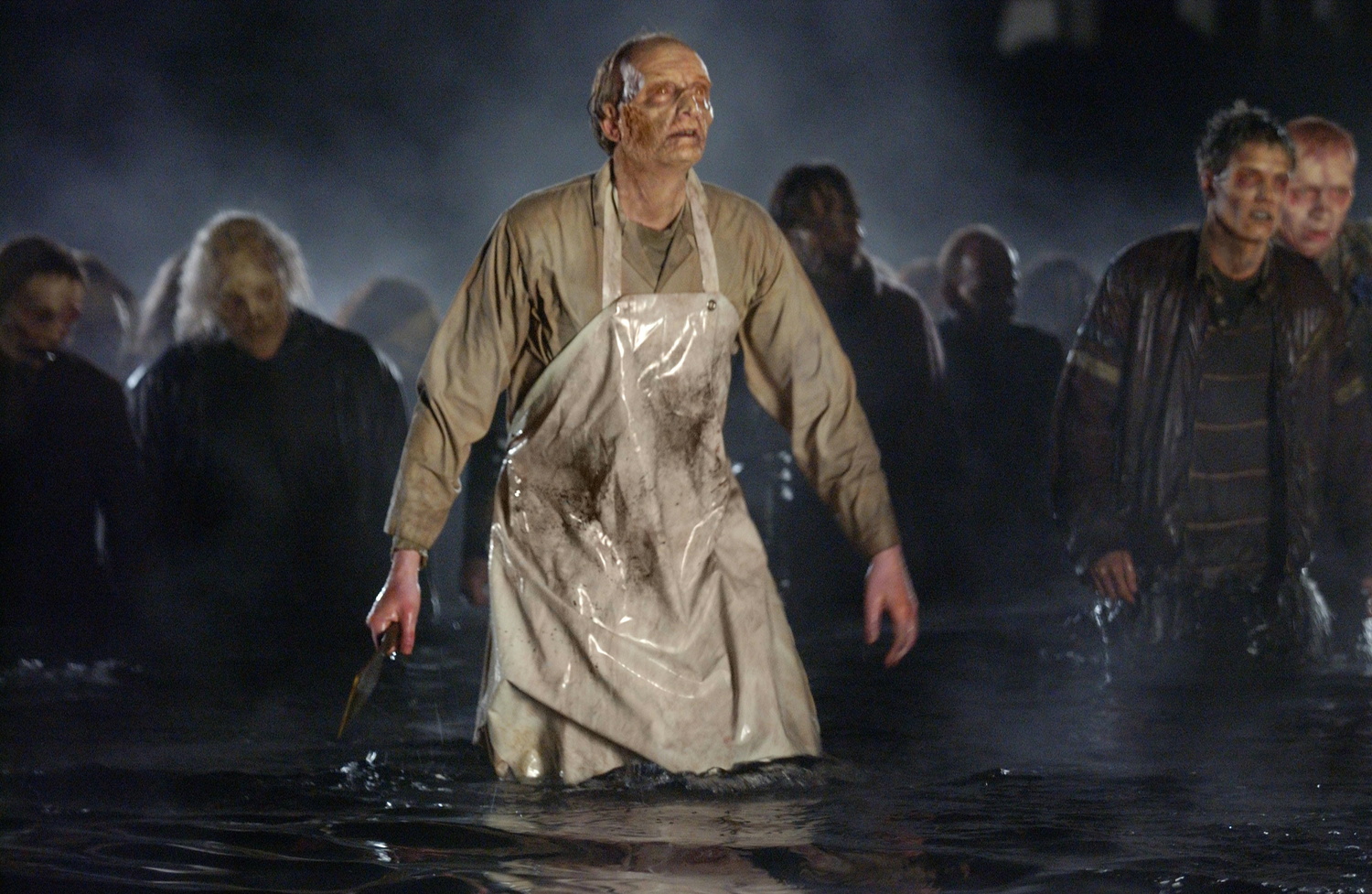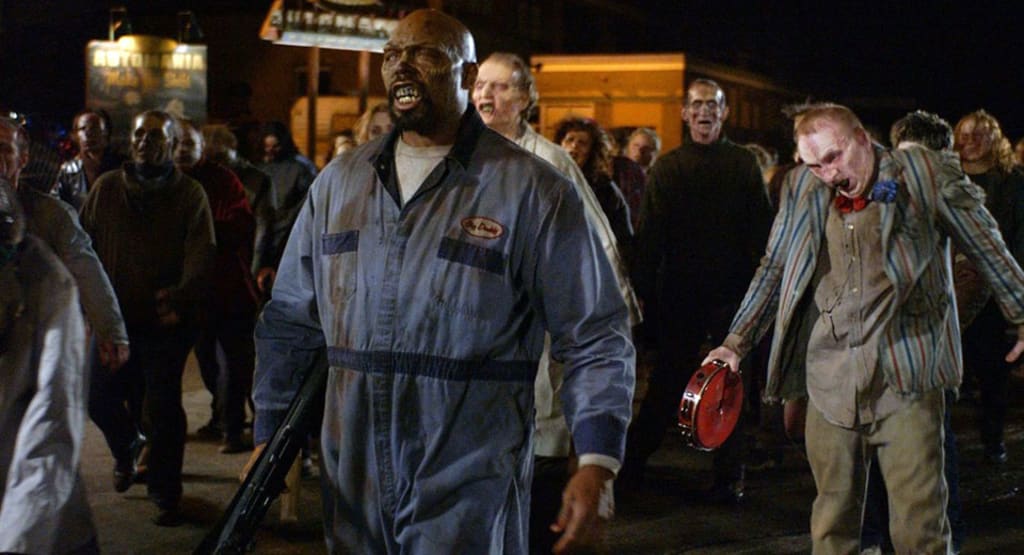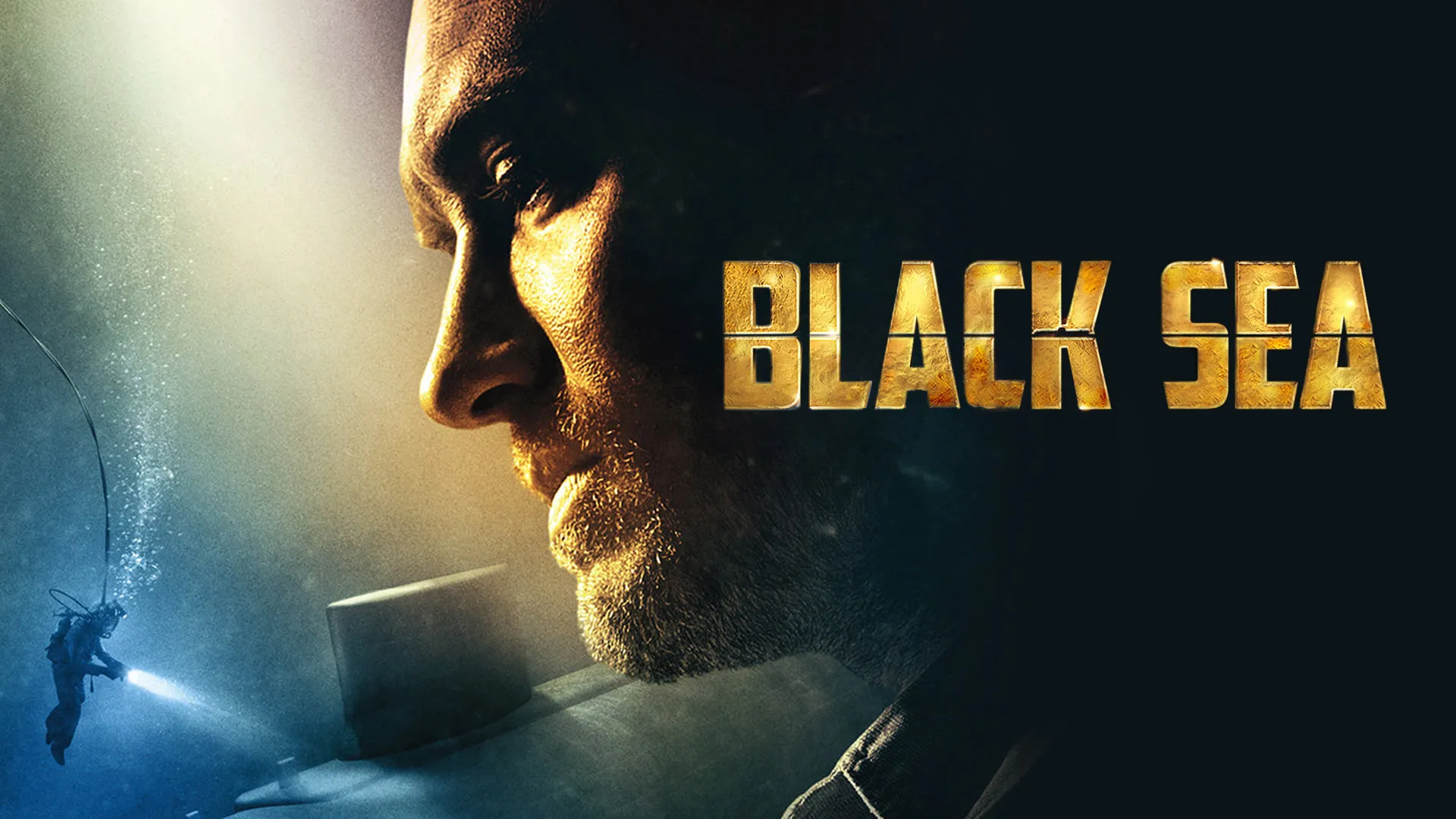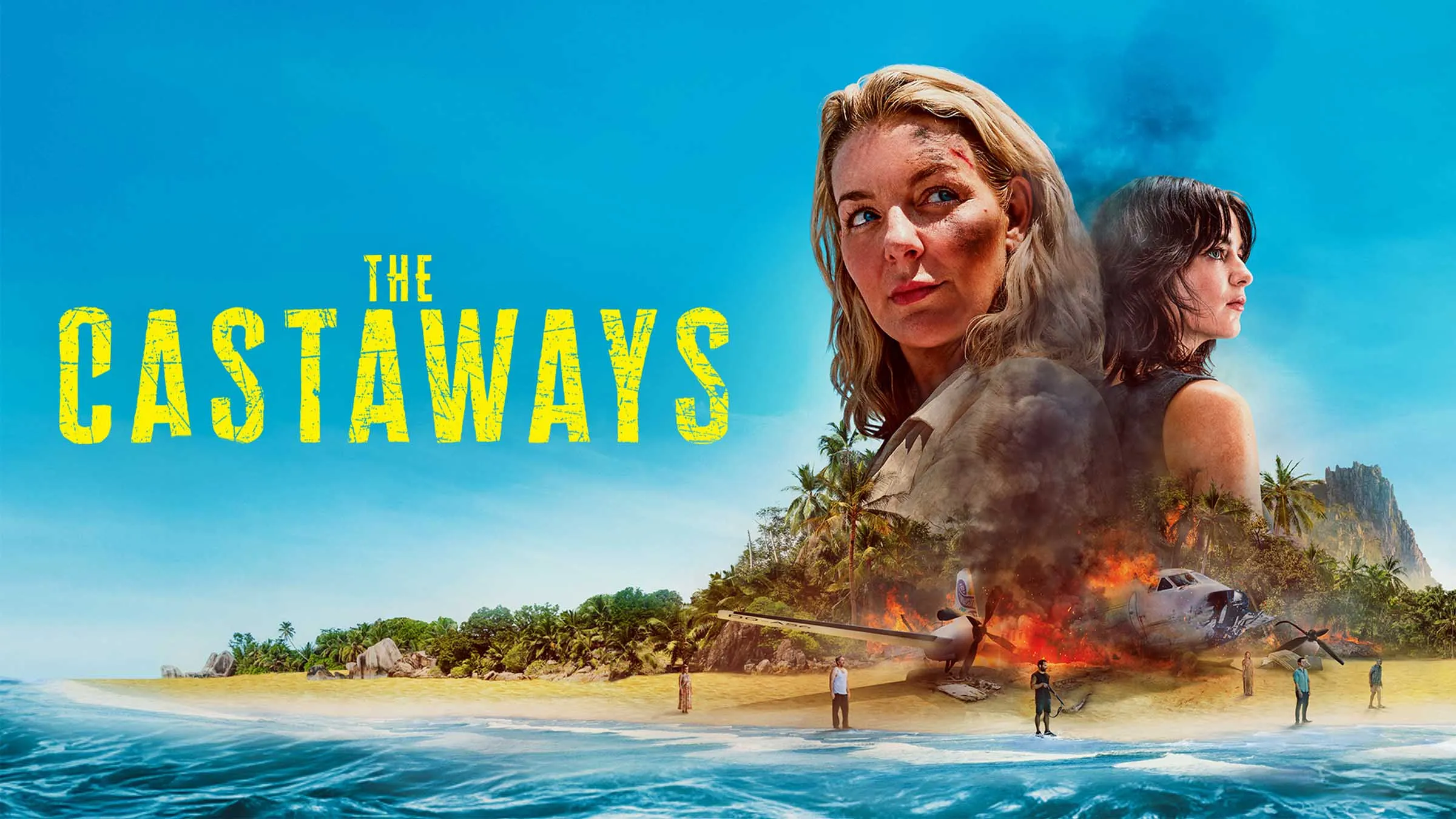Land of the Dead (2005): Romero’s Apocalyptic Vision of Class and Chaos
Land of the Dead (2005) marked George A. Romero’s long-awaited return to the zombie genre he pioneered. As the fourth installment in his legendary “Dead” series — following Night of the Living Dead (1968), Dawn of the Dead (1978), and Day of the Dead (1985) — the film brought Romero’s undead apocalypse into the 21st century. Set in a world where zombies have overrun the Earth and the last remnants of human civilization cling to survival behind fortified walls, Land of the Dead is not just a horror movie — it’s a sharp critique of class division, consumerism, and political decay.
The story centers on a dystopian city-state ruled by Kaufman (played chillingly by Dennis Hopper), a corrupt businessman who lives luxuriously in a skyscraper called Fiddler’s Green while the poor scavenge below in squalor. Society has become a caste system, with the wealthy isolated from danger and the underclass used for labor and entertainment. Zombies are a constant threat outside the city’s walls, but it’s the internal rot of inequality and greed that drives the real conflict.

Riley Denbo (Simon Baker), a former soldier turned scavenger, serves as the film’s reluctant hero. Alongside Cholo (John Leguizamo), a volatile associate with ambitions of joining the elite, Riley operates “Dead Reckoning,” a heavily armed vehicle used to retrieve supplies from zombie-infested areas. When Cholo is denied entry into the upper class, he hijacks Dead Reckoning and threatens to destroy Fiddler’s Green — forcing Riley to intervene, not to protect the elite, but to stop total anarchy.
What elevates Land of the Dead beyond typical zombie fare is Romero’s bold shift in the undead themselves. In this installment, the zombies — led by the intelligent and emotive “Big Daddy” — begin to show signs of learning, communication, and even empathy. They are no longer just mindless killers, but a collective force seeking something more, perhaps even justice. Romero subverts expectations by making the zombies almost sympathetic, raising unsettling questions about who the real monsters are.

Visually, the film is gritty, grim, and atmospheric. The city is cloaked in darkness, and the violence is graphic yet purposeful. Practical effects and makeup bring Romero’s undead creations to grotesque life, while CGI is used sparingly but effectively. The action is tight and intense, yet it never overshadows the social commentary at the film’s heart.
Land of the Dead was released in a post-9/11 world and reflected anxieties about terrorism, surveillance, and government failure. Romero’s signature satire remained intact, offering a bleak but resonant vision of a society eating itself from within. The divide between the protected and the expendable is eerily relevant today — making the film feel as timely now as it did in 2005.
Though it may not have had the revolutionary impact of Romero’s earlier work, Land of the Dead remains a bold and thoughtful piece of horror cinema. It’s a reminder that even in a world crawling with the undead, the worst horrors often come from the living.
-1752044614-q80.webp)


-1751938542-q80.webp)